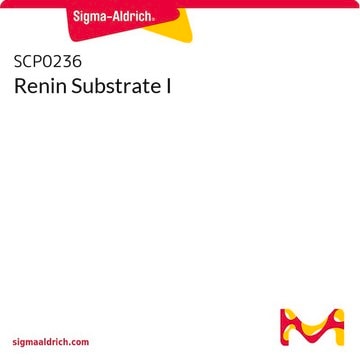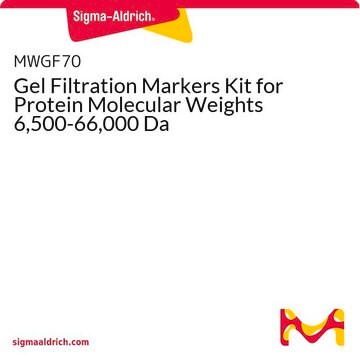Y0001154
Aprotinin for system suitability
European Pharmacopoeia (EP) Reference Standard
Synonym(s):
Aprotinin
Sign Into View Organizational & Contract Pricing
All Photos(1)
About This Item
Recommended Products
grade
pharmaceutical primary standard
API family
aprotinin
manufacturer/tradename
EDQM
application(s)
pharmaceutical (small molecule)
format
neat
storage temp.
2-8°C
General description
This product is provided as delivered and specified by the issuing Pharmacopoeia. All information provided in support of this product, including SDS and any product information leaflets have been developed and issued under the Authority of the issuing Pharmacopoeia.For further information and support please go to the website of the issuing Pharmacopoeia.
Application
Aprotinin for system suitability EP Reference standard, intended for use in laboratory tests only as specifically prescribed in the European Pharmacopoeia.
Packaging
The product is delivered as supplied by the issuing Pharmacopoeia. For the current unit quantity, please visit the EDQM reference substance catalogue.
Other Notes
Sales restrictions may apply.
related product
Product No.
Description
Pricing
Storage Class
11 - Combustible Solids
wgk_germany
WGK 1
flash_point_f
Not applicable
flash_point_c
Not applicable
Choose from one of the most recent versions:
Certificates of Analysis (COA)
Lot/Batch Number
Sorry, we don't have COAs for this product available online at this time.
If you need assistance, please contact Customer Support.
Already Own This Product?
Find documentation for the products that you have recently purchased in the Document Library.
Customers Also Viewed
Ulrich Weininger et al.
Biochemistry, 53(28), 4519-4525 (2014-07-02)
Intramolecular motions of proteins are critical for biological function. Transient structural fluctuations underlie a wide range of processes, including enzyme catalysis, ligand binding to buried sites, and generic protein motions, such as 180° rotation of aromatic side chains in the
Regulatory decisions pertaining to aprotinin may be putting patients at risk.
Paul C Hébert et al.
CMAJ : Canadian Medical Association journal = journal de l'Association medicale canadienne, 186(18), 1379-1386 (2014-10-01)
Philippe Leroux et al.
Journal of neuropathology and experimental neurology, 73(5), 387-402 (2014-04-09)
Intracerebral-intraventricular hemorrhages (ICH/IVH) in very preterm neonates are responsible for high mortality and subsequent disabilities. In humans, tissue plasminogen activator (t-PA) initiates fibrinolysis and activates endoluminal-endothelial receptors; dysfunction of the t-PA inhibitor (PAI-1) results in recurrent hemorrhages. We used PAI-1
D Royston
Anaesthesia, 70 Suppl 1, 46-49 (2014-12-03)
There is a considerable difference between the mechanism of action of the lysine analogues, tranexamic acid and epsilon-aminocaproic acid, and the serine protease inhibitor aprotinin. Aprotinin acts to inactivate free plasmin, but with little effect on bound plasmin, whereas the
Reduction in serine protease activity correlates with improved rosacea severity in a small, randomized pilot study of a topical serine protease inhibitor.
Aimee M Two et al.
The Journal of investigative dermatology, 134(4), 1143-1145 (2013-11-12)
Our team of scientists has experience in all areas of research including Life Science, Material Science, Chemical Synthesis, Chromatography, Analytical and many others.
Contact Technical Service











